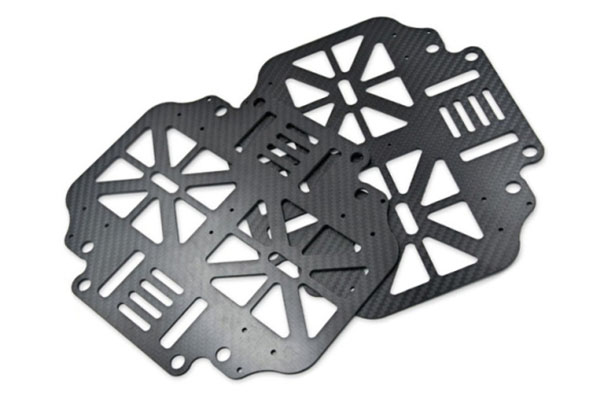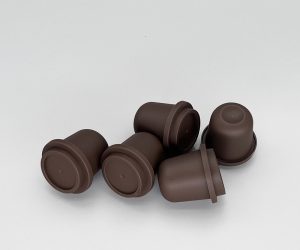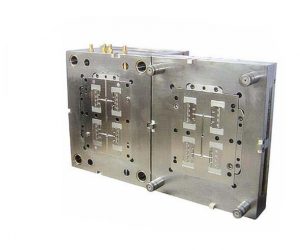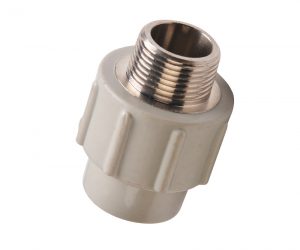1. Introduction: The Healthcare Renaissance Through Additive Manufacturing
Manufacture additive (AM), more commonly recognized as 3D printing, is not just a technological novelty; it is a transformative force revolutionizing the medical device landscape. This innovative approach to manufacturing has the potential to reshape healthcare as we know it, offering solutions that were once consigned to the realm of science fiction.
At its core, AM is a process that constructs three - dimensional objects by layering materials based on a digital model. In healthcare, this translates to the creation of highly customized medical devices, from prosthetics that perfectly fit an individual's unique anatomy to intricate surgical implants. The implications of this technology are far - reaching, touching every aspect of patient care, from diagnosis to treatment and recovery.
The market growth of medical AM is a testament to its burgeoning importance. A 2025 report by Grand View Research projects that the global medical AM market will reach $4.2 billion by 2030. This growth is propelled by a confluence of factors, chief among them being the increasing demand for patient - specific solutions. As medical professionals strive to provide personalized care, AM emerges as a powerful tool, enabling the production of devices tailored to each patient's specific needs.
Moreover, AM is not just about customization; it also offers significant advantages in terms of cost - effectiveness and speed. Traditional manufacturing methods often involve high setup costs and long production lead times, especially for small - batch or customized products. In contrast, AM can produce a single, highly customized device at a fraction of the cost and time, making it an attractive option for medical device manufacturers.
The environmental benefits of AM also cannot be overlooked. By using only the necessary materials for production, AM reduces waste significantly compared to traditional subtractive manufacturing methods, which often involve removing large amounts of material to create the final product.
In the following sections, Yigu Technology will delve deeper into the specific ways in which AM is revolutionizing medical devices, exploring its applications in prosthetics, implants, surgical tools, and drug delivery systems. We will also examine the challenges that must be overcome for this technology to reach its full potential in healthcare and look ahead to the future of AM - enabled medical innovation.
2. Technical Foundations of Additive Manufacturing in Medical Devices
2.1 Core Processes and Materials
At the heart of the AM revolution in medical devices are its core processes and materials, which work in tandem to create devices that are not only functional but also tailored to the unique needs of patients.
AM encompasses a range of processes, two of the most prominent being Selective Laser Sintering (SLS) and Fused Deposition Modeling (FDM). SLS is a powder - bed - based technology that uses a high - power laser to sinter powdered materials together. As the laser scans the powder bed according to the digital model, the powder particles fuse, layer by layer, to form the final structure. This process is highly precise and can create complex geometries, making it suitable for applications where intricate internal structures are required, such as in porous bone implants.
FDM, on the other hand, is a more accessible and commonly used process, especially for prototyping and the production of less complex devices. It involves heating a thermoplastic filament until it becomes semi - liquid and then extruding it through a nozzle. The nozzle moves in a predefined pattern, depositing the material layer by layer to build the 3D object. FDM is popular due to its relatively low cost, ease of use, and the wide variety of thermoplastic materials available for use.
The choice of materials in Yigu Technology AM for medical devices is crucial, as these materials must meet strict biocompatibility, mechanical strength, and durability requirements.
- Titane Alloys: These alloys are a staple in orthopedic implants. Their biocompatibility ensures that the body does not reject the implant, while their high strength - to - weight ratio makes them ideal for bearing the mechanical loads placed on joints and bones. For example, in hip replacement surgeries, titanium alloy implants can provide long - term stability and functionality, allowing patients to regain mobility with minimal risk of implant failure.
- PEEK (Polyether - ether - ketone): PEEK is a high - performance polymer that has found extensive use in spinal cages. Its radiolucency is a significant advantage, as it allows for easy visualization of the spinal area using X - rays or other imaging techniques without interference from the implant material. Additionally, PEEK's durability ensures that it can withstand the mechanical stresses associated with spinal movement over long periods.
- Composites: Carbon - fiber reinforced plastics are an example of composites used in medical devices. These materials offer a combination of lightweight properties and high strength. In the case of external prosthetics, carbon - fiber composites can reduce the overall weight of the device, making it more comfortable for the wearer, while still providing the necessary strength to support daily activities.
2.2 Precision Metrics
The precision of AM - manufactured medical devices is a key factor in their success, and when compared to traditional manufacturing methods, Yigu Technology AM offers several significant advantages.
| Parameter | AM - Manufactured Devices | Traditional Methods |
| Tolerance | ±0.1mm | ±0.5mm |
| Finition de surface (Ra) | 10–20μm | 20–50μm |
| Customization | Full personalization | Limited standard sizes |
| Lead Time | 1–3 days | 2–6 weeks |
Tolerance: AM - manufactured devices can achieve a tolerance of ±0.1mm, which is significantly more precise than the ±0.5mm typically achievable with traditional methods. This high level of tolerance is crucial in medical devices, as even small deviations in size can affect the fit and function of implants or prosthetics. For example, in dental implants, a precise fit is essential for proper osseointegration and long - term success.
Finition de surface: The surface finish of AM - made devices, with a roughness average (Ra) of 10–20μm, is smoother than that of traditionally manufactured devices (20–50μm). A smoother surface can reduce the risk of infection by minimizing the areas where bacteria can adhere, and it can also improve the mechanical properties of the device by reducing stress concentrations.
Customization: Perhaps one of the most significant advantages of AM is its ability to offer full personalization. Traditional manufacturing methods are often limited to producing devices in standard sizes, which may not fit every patient perfectly. In contrast, AM can create devices that are customized to an individual patient's anatomy, as scanned data can be directly translated into a 3D model for printing. This is especially beneficial in the production of prosthetics, where a perfect fit can enhance comfort and functionality.
Lead Time: AM can produce medical devices in a remarkably short lead time of 1–3 days. Traditional manufacturing, which often involves multiple steps such as tooling, molding, and machining, can take 2–6 weeks. This short lead time is invaluable in emergency situations or when patients need to be fitted with devices quickly, such as in the case of trauma patients requiring immediate prosthetics.
4. Advantages Over Traditional Manufacturing
4.1 Cost and Efficiency
One of the most compelling reasons for the adoption of Additive Manufacturing (AM) in medical device production is its significant cost - effectiveness and enhanced efficiency compared to traditional manufacturing methods.
Material Waste Reduction: Traditional manufacturing often involves subtractive processes, where large amounts of raw material are removed to create the final product. This results in substantial material waste. In contrast, AM is an additive process, building objects layer by layer. This approach reduces material waste by up to 90% in some cases. For Yigu Technology example, when manufacturing a complex orthopedic implant, traditional machining might discard large portions of metal to achieve the desired shape, while AM uses only the exact amount of material required, minimizing waste and associated costs.
Prototyping Costs: The cost of prototyping is a major expense in medical device development. AM can cut prototyping costs by approximately 70%. A traditional prototype might require the creation of custom molds or tooling, which can be time - consuming and expensive, especially for small - batch production. With AM, engineers can quickly produce a prototype directly from a digital model, eliminating the need for costly tooling. This not only reduces the financial cost but also speeds up the development cycle, allowing for faster iterations and improvements.
Production Cycle Time: AM can also significantly reduce production cycle times. A 2023 Volkswagen case study serves as an excellent example of this efficiency. In the production of conformal - cooled molds using AM, the cycle time was reduced by 35%. These molds, which are used in the manufacturing of various components, typically have long production times due to the complexity of cooling channels. Traditional manufacturing methods struggle to create these intricate channels, leading to longer cycle times. With AM, the complex cooling channels can be printed directly, optimizing the cooling process and reducing the overall cycle time. Additionally, the scrap rate was reduced by 60% as the precision of AM ensures a higher quality product with fewer defects.
4.2 Design Flexibility
Another area where AM outshines traditional manufacturing is in design flexibility.
Complex Geometries: AM enables the creation of complex geometries that are nearly impossible to achieve with traditional methods. For Yigu Technology instance, in the production of dental crowns, AM can create internal channels within the crown. These channels can improve the fit of the crown on the tooth, reducing the need for post - production adjustments. Studies have shown that this can reduce adjustment time by 25%. Traditional manufacturing methods, such as casting or milling, are limited by the tools and processes used, making it difficult to create such intricate internal structures.
Patient - Specific Designs: The ability to create patient - specific designs is a game - changer in healthcare. AM allows for the production of medical devices that are tailored to an individual's unique anatomy. In the case of prosthetics, a patient's limb can be scanned, and the data used to create a custom - fit prosthetic. This personalized approach not only improves the functionality of the device but also enhances the patient's comfort. Traditional manufacturing, on the other hand, often produces devices in standard sizes, which may not fit every patient perfectly, leading to discomfort and reduced functionality.
| Aspect | AM - Manufactured Medical Devices | Traditional Manufacturing |
| Material Waste | Reduced by up to 90% | High waste due to subtractive processes |
| Prototyping Costs | Cut by approximately 70% | High due to tooling and setup costs |
| Production Cycle | Reduced by 35% (e.g., Volkswagen case) | Long due to complex processes |
| Design Complexity | Can create highly complex geometries | Limited by tooling and processes |
| Customization | Full patient - specific customization | Limited to standard sizes |
7. FAQ
Q1: Are 3D - printed medical devices safe?
A: Yes. Materials undergo rigorous testing (ISO 10993), and FDA - approved devices have a 99.7% success rate in clinical trials.
Q2: Are additive - manufactured medical devices cost - effective?
A: Absolutely. Customized prosthetics cost \(500 - \)2,000, compared to \(10,000 - \)50,000 for traditional models, while cutting rehabilitation time by 50%.
Q3: What are the current challenges in implementing AM in healthcare?
A: Training clinicians on 3D design tools. Initiatives like the [insert relevant initiative name] aim to certify 100,000 professionals by 2026.




